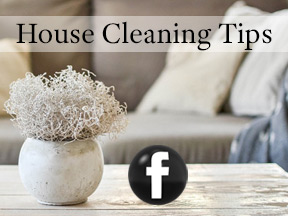How to Clean a Couch

How to Clean a Couch and Keep It Looking Like New
A clean couch can instantly refresh the look of a living room, but deep-cleaning upholstery isn’t as straightforward as it seems. While some maintenance tasks can be handled at home, certain situations are best left to professional upholstery cleaners. Understanding when to DIY and when to call the experts can prevent damage, protect your investment, and keep your couch looking its best for years.
When to Call a Professional
Not all couches are created equal, and improper cleaning can cause permanent damage. Here are a few scenarios where hiring a professional is the safest choice:
- Natural Fabrics: Cotton, linen, wool, and silk are delicate and prone to discoloration or browning when cleaned incorrectly. Cotton, for example, can darken when it gets wet and is exposed to oxygen.
- Velvet Upholstery: Velvet requires special care. Steam cleaners can leave unsightly streaks, and restoring its appearance often involves a specialized carding brush.
- Dry-Clean-Only Fabrics: If the couch tag recommends dry cleaning, don’t risk DIY cleaning. Using the wrong solution can damage the fibers or cause dyes to bleed.
- Moisture-Sensitive Materials: Without proper extraction tools, excess moisture can get trapped inside the cushions, leading to mold and mildew growth.
- Stubborn or Unknown Stains: The wrong cleaning solution can interact with a stain’s pH level and make it worse. Professionals know how to balance pH for safe, effective stain removal.
Safe Couch Fabrics for At Home Cleaning
Synthetic fabrics are generally more forgiving and suitable for DIY cleaning. These include:
- Microfiber
- Nylon
- Polyester
- Acrylic
- Performance fabrics
For these materials, basic cleaning and spot treatment can be done safely at home as long as you follow proper techniques.
What You’ll Need to Clean a Couch
Before starting, gather these supplies:
- Vacuum with upholstery attachments
- Spray bottle
- Neutral cleaning solution
- Soft upholstery brush
- Steam extractor (optional but highly recommended)
- White towels for blotting
How to Clean a Couch
Vacuum Thoroughly
Use an upholstery attachment to vacuum the entire couch, including cushions, crevices, and underneath pillows. This removes dust, crumbs, and pollen that aren’t water-soluble.
Check the Care Tag
Look for cleaning codes:
- W: Safe for water-based cleaners.
- S: Solvent-only – avoid water.
- W/S: Either water- or solvent-based cleaners are fine.
- X: Vacuum only – no DIY wet cleaning.
If the tag recommends dry clean only methods, stop here and call a pro.
Apply a Neutral Cleaner
Lightly mist the couch using a spray bottle filled with a neutral upholstery cleaner. Work in sections if your couch is large.
Gently Brush the Fabric
Use a soft upholstery brush to spread the cleaner evenly. Avoid scrubbing – gentle strokes are enough to loosen dirt. Allow the cleaner to sit for about 10 minutes.
Extract or Blot the Cleaner
If you have a steam extractor, slowly run it over the surface to remove the cleaning solution. Otherwise, blot the fabric thoroughly with a clean white towel. Never rub, as this can damage fibers.
Dry Completely
Run the extractor again without steam to speed up drying, or place fans nearby to circulate air. Remove cushions and prop them upright for better airflow.
How to Maintain a Couch Between Deep Cleans
Apply Fabric Protection
Using an upholstery protector creates a barrier on fabric fibers, helping prevent stains from setting in. Protectors are often available when purchasing furniture, but you can also buy over-the-counter sprays designed for at-home application.
Stick to a Cleaning Schedule
Regular maintenance prevents dirt and oils from embedding deep into the fabric:
- Light cleaning: Vacuum weekly or biweekly.
- Deep cleaning: Once every 12–24 months, depending on pets, kids, and daily use.
Spot-Treat Stains Immediately
The faster stains are addressed, the easier they are to remove:
- Pet urine: Mix equal parts white vinegar and water, blot gently with a white towel, and let it air dry.
- Food spills: Dab with a clean cloth and use a neutral cleaner to lift residue.
- Oil stains: Sprinkle baking soda, let it sit for 15 minutes, then vacuum before spot-treating.
How to Clean a Couch
- Always test cleaners on a hidden area first to ensure they don’t discolor the fabric.
- Avoid oversaturating upholstery with water, especially on cushions.
- Keep a small upholstery cleaning kit handy for unexpected spills and accidents.
- For delicate fabrics or extensive stains, professional cleaning is the safest route.
With the right care and regular maintenance, a couch can look and feel fresh for years, saving money and extending the life of your furniture.






